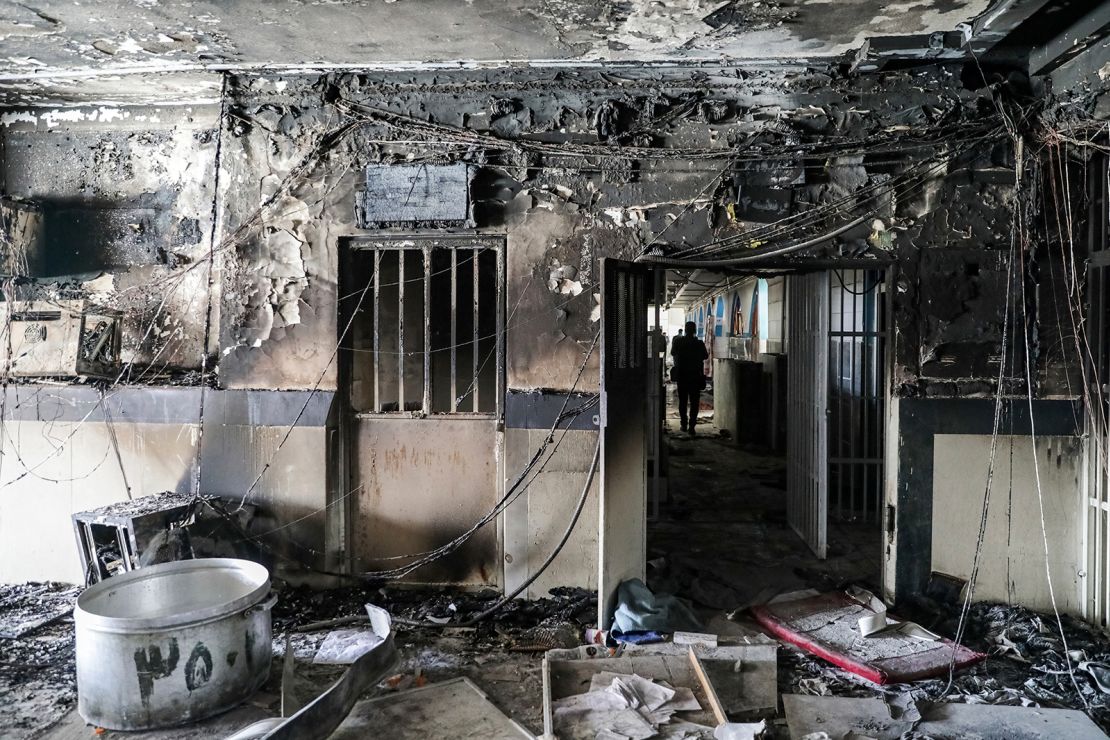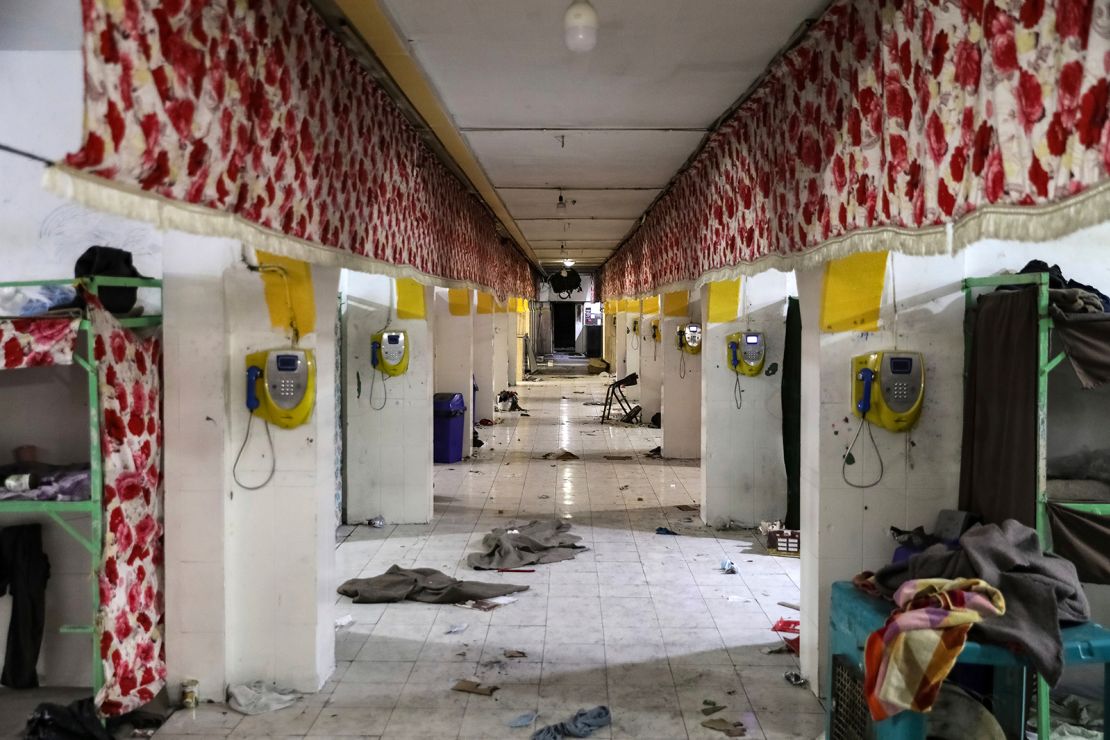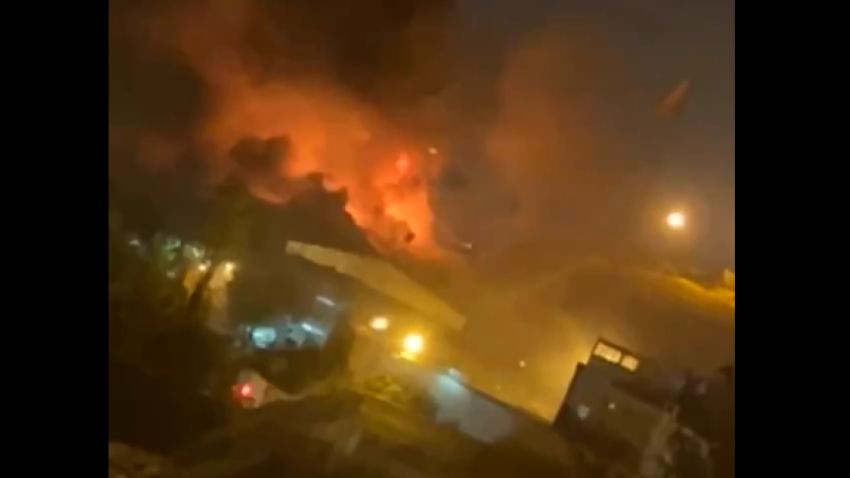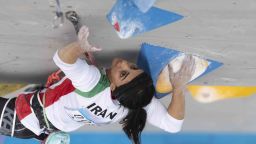Editor’s Note: Kylie Moore-Gilbert is an Australian-British scholar of Middle East and Islamic studies. She was imprisoned in Iran in September 2018 over espionage allegations and released in November 2020 in a prisoner exchange. Moore-Gilbert is the author of “The Uncaged Sky: My 804 Days in an Iranian Prison.” The views expressed in this commentary are her own. View more opinion on CNN.
“Evin’s on fire! It’s going up in flames, and they’re shooting at the prisoners inside!” This was one of the flurry of messages I received late October 15 from Iranian activists and fellow survivors of the country’s most notorious prison.

Among us was a collective sense of shock and amazement, tempered with fear and concern for those trapped inside Evin prison. I had visions of my former cellmates, dear friends who had become like sisters, cowering in smoke-filled hallways fighting the effects of tear gas.
I could barely bring myself to contemplate their terror, being locked in a crowded prison ward with no prospect of escape as flames, bullets and riot police encroached from all sides.
Deep down part of me hoped that this godforsaken place would burn to the ground — after all the prisoners had escaped, of course.
Knowing that Evin prison had experienced sit-ins, demonstrations and unrest in the one month since Iran’s protest movement erupted on the streets, I immediately suspected a prison uprising could have been behind the fire. (Iran’s judiciary maintains prisoners started the blaze in a workshop after a fight, and that those killed died of smoke inhalation.)
But reports since have suggested that the blaze began in men’s Ward 7, which housed a mix of criminal inmates and recently arrested protesters.

These men allegedly broke down the doors between their ward and the neighboring Ward 8 and clashed with security forces, who reportedly fired bullets and tear gas indiscriminately into the resulting conflagration. Eight prisoners have been reported dead as a result of the onslaught.
For decades the notoriously brutal facility has housed political prisoners — most recently, activists arrested during nationwide protests following the death of 22-year-old Mahsa Amini last month in police custody.
Former foreign hostages and other victims of Iran’s prison system as well as family members of current detainees frantically exchanged information and checked up on one another in the fire’s aftermath.
One by one, the families of political prisoners held in Evin got word out that their loved ones were OK. Elderly Austrian dual citizen Massud Mossaheb was suffering from the effects of tear gas and smoke inhalation but was alive. High-value American hostages Siamak Namazi and Emad Sharghi had been whisked out of the men’s public wards and interned elsewhere, away from the flames.
The Iranian human rights lawyer Amirsalar Davoudi got word out that he and his cellmates in Ward 4 had survived — likewise the recently arrested activist Arash Sadeghi. There was a collective sigh of relief among those of us connected to the prison with every welfare check received.
The two years I spent in Evin were the most harrowing of my life. I had been arrested at Tehran airport following a three-week visit to attend an academic conference, and following a sham trial, was convicted of “espionage.” I ultimately served two years and three months of a 10-year sentence before being freed in a prisoner swap deal negotiated by the Australian government.
Evin prison, where I spent most of my sentence, is built into the steep foothills of the Alborz Mountains. Ringed by high concrete walls topped with razor wire, the prison is guarded by a contingent of armed soldiers whose noisy patrols could often be heard from within the cells.
Entering via the prison’s imposing front gates involves passing an elaborate series of checkpoints while blindfolded, handcuffed and crammed into the back seat of a vehicle, alongside prison transfer guards. A prisoner could count how many checkpoints had been passed by how many times the vehicle’s trunk was opened and inspected.
Inside is a maze of administrative buildings and judiciary offices, with roughly a dozen prison wards perched on top of each other and built into the sharp slope of the mountain.
Evin is also home to maximum security detention facilities under the control of external actors, such as the Revolutionary Guards or the Ministry of Intelligence. It was in one of these facilities, the Revolutionary Guards’ 2A unit, that I lost more than two years of my life.
These “black sites” are excluded from the oversight of Iran’s Prison Authority, an institution that is supposed to safeguard prisoner rights. These various competing groups would routinely clash with one another over everything, from the granting of prisoner furloughs to the provision of medical treatment to inmates.
Remarkably, during the fire these fierce institutional rivalries would inadvertently come to save some of Evin’s most vulnerable prisoners from harm.
As I watched video after shocking video of the flames rapidly engulfing Evin’s public wards, my anxiety for its female political prisoners escalated. I had lived alongside many of these women, my sisters. I reached out to everyone I knew. “Any news of Niloufar Bayani and Sepideh Kashani? What about Fariba Adelkhah or Sepideh Gholian?”
I knew the courageous lawyer Nasrin Sotoudeh was said to have been recently rearrested, along with a number of other activists I had known in prison, such as Golrokh Iraee.

Just as many of the protests on the streets were being led by women, some of the Islamic Republic’s most effective opponents are locked away right now in the women’s ward at Evin. Some of these inspiring women could become the future leaders of a free and democratic Iran if given the chance.
As the situation stabilized, crowds massed on the streets outside Evin, and family members desperately tried to gather information about their loved ones inside.
“The women’s ward is untouched!” I heard from someone who had spoken with emergency services outside the prison gates. Two further sources from political prisoner families confirmed the news. “The women are shaken, but everyone’s OK.”
It was days before I would glean more news of my friends. It appears that, as chaos reigned supreme and security forces unleashed deadly force on those inmates attempting to escape their burning wards, the female political prisoners came perilously close to attack.
A close contact of one of them told me that, in addition to the clashes in wards 7 and 8 between prisoners and heavily armed security, there were also violent disagreements between prison management and the Revolutionary Guards and other hard-line security forces, who had been using live fire and tear gas to quash the prisoner revolt.
According to a family member, at one point “anti-riot shooters were trying to get inside (the women’s ward) and were violently shooting at random. The head of the Prison Authority himself stood in the doorway and prevented the shooters from entering.”
I can’t imagine what it must have felt like to hear gunfire just meters outside the locked doors of their unit. That this man is part of a cruel and repressive system complicit in the unjust detention of innocent prisoners I have no doubt, but I am glad he discovered a conscience that day. The very lives of my precious friends may have depended on it.
It is not illogical to suppose that Iranian prisoners, many of them entirely innocent of any crime, would want to demonstrate solidarity with their brave compatriots protesting on the streets.
If the regime cannot control its most sensitive maximum security prison, it is likely also losing its grip over the country more broadly. Many of us are now hoping for a day in which there will be no need for an Evin prison at all.

